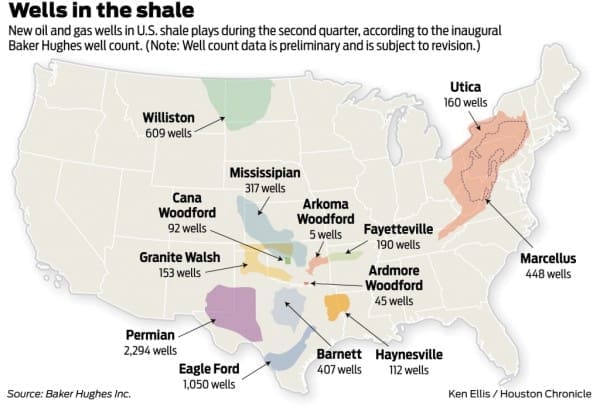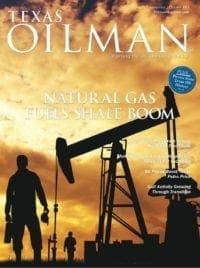Oil field activity in South Texas is adding up to lots of new wells. In the last four quarters, operators have drilled 4,092 new wells in the Eagle Ford Shale, according to a new quarterly count of U.S. wells from Baker Hughes.
In the second quarter of this year, there were 1,050 new Eagle Ford wells – which means each rig working in the region drilled 4.56 wells. The quarterly well count is a new measure from the Houston-based Baker Hughes, which also releases a rig count on Fridays. There were 9,061 wells in the Permian Basin in West Texas in the last four quarters – by far the biggest number of new wells in the U.S. The Williston Basin (also known as the Bakken Shale in North Dakota and eastern Montana) had 2,357 wells. The Marcellus Shale in Pennsylvania had 1,801 new wells in the last four quarters. And the Mississippian Limestone, an oil field in Kansas, had
1,316 new wells. Putting both the rig count and the well count together should show how quickly companies are able to drill in various fields around the U.S. While the Eagle Ford was averaging 4.56 wells per rig, the U.S. average was 5.2 land wells for each rig. The Permian Basin in West Texas was averaging 4.89 wells per rig during the quarter, while things appear to be clipping right along in the Barnett Shale in North Texas, where there were 12.1 wells per rig. The Williston Basin was averaging 3.25 wells per rig in the second quarter. The Marcellus was averaging 5.71 wells per rig. And the Mississippian was at 4.15 wells per rig.
The well count includes only new onshore wells started in the U.S. in a given quarter and historical U.S. onshore well count data going back to the first quarter of 2012. The well count does not include wells categorized as workover, plugged and abandoned, or completed. It also does not include shallow wells, sidetracks drilled as part of existing wells or projects deemed inconsequential to the oil and gas industry.
Source: Lynn Doan and Christine Harvey, Bloomberg News






